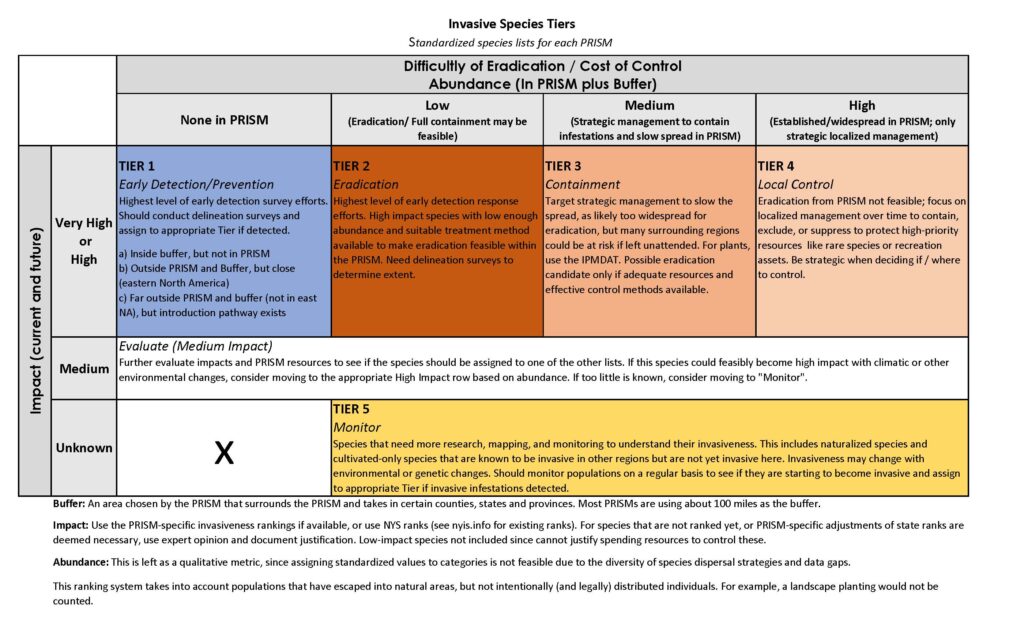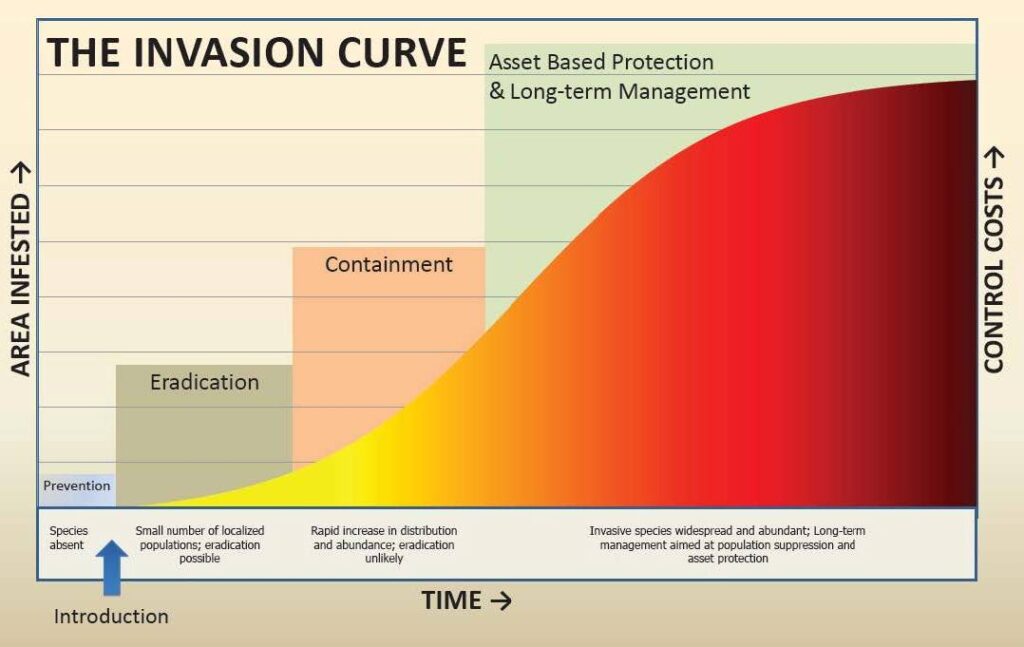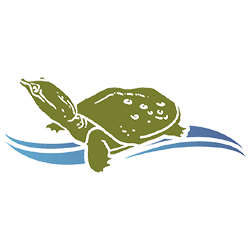SUMMARY: The cost of herbicide treatment to control or eliminate the Tier 4 invasive species, Curly-leaf pondweed (Potamogetan crispus) and Eurasian milfoil (Myriophylum spicatum), fails to offer justifiable benefits. The eradication of Tier 4 invasives by existing management practices is not feasible.
The Chautauqua-Conewango Consortium (Consortium), a Waterkeeper Alliance Affiliate serves as the voice of protection for our region’s water, both surface and ground, and all of the creatures who depend on it. That protection is based on everyone’s right to clean water for drinking, fishing and swimming.
To strategically inform the management of Curly-leaf pondweed and Eurasian watermilfoil in the region’s waters, the Consortium states:
- Regional funding is limited and therefore financial resources should not be allocated for large-scale herbicide treatments to control the long-established, widespread invasive aquatic species, Curly-leaf pondweed and Eurasian watermilfoil. Their Tier 4 status means that, with the extent of their growth, these species cannot be eradicated with herbicide use.
- Herbicide treatments to control Tier 4 species significantly reduces foraging and protective areas for the rearing and spawning of fish. Funding to remove habitat that directly affects the viability of the fish populations provides no cost benefit to the regional economy, which is supported by annual fishing activity including multiple muskellunge, walleye and bass tournaments.
- Herbicide treatments of Tier 4 species cause collateral damage to intermingled native species. Financing the removal of native plants, either directly or indirectly, funds the reduction of biodiversity of the region. Its natural setting is a main attraction contributing to the region’s economy for both residents and visitors.
- The community-supported goal is the maintenance of the recreational use of the waters. Financial investment in herbicide treatments, which contribute nutrients to the water and play a role inbasin-wide algal conditions, is not justified. Harmful algal blooms adversely impact recreational uses including swimming and boating, as well as pet and human health.
- Repeated annual herbicide use indicates it is not successful in limiting the reappearance of these invasives the following year. Increased use leads to over-reliance on this option for managing these plants. It is time for us to support less costly, more sustainable management practices.
What is an Invasive Species?
An Invasive Species is non-native to the ecosystem under consideration and whose introduction causes, or is likely to cause, economic or environmental harm, or harm to human health. Invasive species may be plants, animals or pathogens.
- Economic Impacts: Reduced agricultural yield, decreased fisheries health, loss of recreation opportunities, decrease in wood/forest products, disrupted trade, decrease in tourism and rising management costs
- Environmental Impacts: Decrease in biodiversity and structural diversity, disruption of natural processes, and reduced ecosystem function and services
- Human Health Impacts: Human injury or illness, decreased soil, air, and water quality, climate and other weather changes, and altered flood regimes
Source: https://www.wnyprism.org/get-involved/learn-about-invasives/
Long-established, Curly-leaf pondweed and Eurasian watermilfoil, no longer fulfill the levels of harm indicated in the above definition. The Western New York Partnership for Regional Invasive Species Management (WNY PRISM) uses the Invasive Species Tier Ranking System, developed for use in NYS by the New York Natural Heritage Program and iMapInvasives, and adopted by the New York State Invasive Species Program, to rank the severity of multiple species. Curly-leaf pondweed and Eurasian watermifoil are both ranked as Tier 4 invasives, best described as “long-established” and “widespread.”
The tiers were created to direct management action of all PRISM partners for invasive species within the WNY PRISM region. The tiers are meant to provide partners and stakeholders with an additional resource to help prioritize and select management strategies and tools to control, but better, eradicate the invasive. Also, the tier rankings by WNY PRISM take into consideration the region’s capacity, including manpower and funding plus available state/federal grants or aid.
This definition of Tier 4 species further indicates that local management is still responsible to “contain, exclude or suppress” these plants. At the same time, the management tool used should not cause further harm, it should protect rare species and recreation assets. Continuing to treat Curly-leaf pondweed and Eurasian watermilfoil with costly herbicides in hopes of eradicating them has been declared “not feasible.”
Additional Resources:
Courtois, Pierre, et al. “A Cost–Benefit Approach for Prioritizing Invasive Species.” Ecological Economics, vol. 146, 2018, pp. 607–620., doi:10.1016/j.ecolecon.2017.11.037.
Mikulyuk, Alison, et al. “Is the Cure Worse than the Disease? Comparing the Ecological Effects of an Invasive Aquatic Plant and the Herbicide Treatments Used to Control It.” FACETS, vol. 5, no. 1, 28 May 2020, pp. 353–366., doi:10.1139/facets-2020-0002.
New York State Department of Environmental Conservation (NYSDEC). 2019. Harmful Algal Blooms (HABS) Program Guide.
Western New York PRISM Invasive Species Tiers
Source: https://www.wnyprism.org/priority-invasives/

Invasion Curve showing control costs as determined by extent of invasive species.
Source:https://www.saj.usace.army.mil/Media/Images/igphoto/2000809451/

